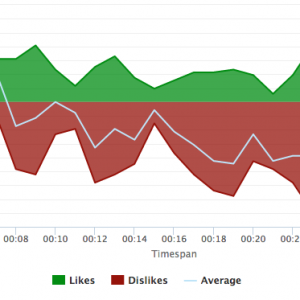Unlocking the Secrets of Target Market Research

Target market research is a vital component of any successful marketing strategy. Understanding your audience and their needs can mean the difference between capturing their attention and being ignored in a sea of competitors. In this article, we’ll explore the importance of target market research, effective methods for conducting it, analyzing and interpreting the data, and implementing the findings to enhance your business offerings and customer experience.
Understanding the Importance of Target Market Research
Target market research is an essential process for any business that wants to succeed. It involves identifying and analyzing the specific audience for your product or service, using data to understand your ideal customers, and what motivates them to make purchasing decisions. By understanding your target audience, you can create a more effective marketing strategy, identify new opportunities for growth, and differentiate yourself from competitors.
One of the significant benefits of target market research is that it helps you understand your customers’ needs and preferences. By doing so, you can tailor your product or service to meet those needs, which can lead to increased customer satisfaction and loyalty. Additionally, target market research can help you identify gaps in the market, which can be an excellent opportunity for growth.
Defining Your Target Audience
Defining your target audience is the first step in target market research. It involves identifying the characteristics of your ideal customer, including factors such as age, gender, income level, geographic location, and education level. By pinpointing these characteristics, you can create a more effective marketing message that resonates with your target audience.
For example, if you’re selling luxury goods, your ideal customer might be someone with a high income level and a taste for luxury items. On the other hand, if you’re selling budget-friendly products, your target audience might be people with lower incomes who are looking for affordable options.
Identifying Market Segments
Market segmentation involves identifying groups of customers with similar characteristics and needs. This can be done by dividing your target audience into smaller groups based on demographics, psychographics, or behavior. By segmenting your market, you can tailor your product or service offerings to meet the unique needs of each group.
For example, if you’re selling beauty products, you might segment your market based on age, with one group for teenagers and another for middle-aged women. This would allow you to create marketing messages and product offerings that are tailored to each group’s specific needs and preferences.
The Role of Demographics and Psychographics
Demographics are the statistical characteristics of a population, such as age, gender, income, and education level. Psychographics, on the other hand, are the personality traits, attitudes, and values that influence customer behavior. Understanding both demographics and psychographics can help you create a more effective marketing strategy that resonates with your target audience.
For example, if you’re selling eco-friendly products, you might target customers who value sustainability and environmentalism. By understanding these customers’ attitudes and values, you can create marketing messages that speak to their desire to make a positive impact on the environment.
In conclusion, target market research is an essential process for any business that wants to succeed. By understanding your target audience, you can create a more effective marketing strategy, identify new opportunities for growth, and differentiate yourself from competitors. So, take the time to research your target market and use the insights you gain to create a successful business.
Effective Methods for Conducting Target Market Research
Conducting target market research is an essential part of any successful marketing strategy. It involves gathering data on customer attitudes, behaviors, and preferences to better understand your target audience. There are several effective methods for conducting target market research, including:
Surveys and Questionnaires
Surveys and questionnaires are a popular method for gathering data on customer attitudes, behaviors, and preferences. They can be administered online, through mail, or in-person, and can provide valuable insights into customer needs and preferences. To make your surveys more effective, it’s important to reach out to companies such as Spot Trender, who use the right questions and to keep the survey short and focused. You can also offer incentives to encourage customers to participate in your survey.
Focus Groups
Focus groups involve bringing together a group of individuals to provide feedback on a product, service, or marketing campaign. They can provide valuable insights into customer attitudes and opinions, and can help identify areas for improvement. To make your focus groups more effective, it’s important to select participants who are representative of your target audience and to ask open-ended questions that encourage discussion and debate.
In-Depth Interviews
In-depth interviews involve conducting one-on-one interviews with individuals to gather detailed feedback on a product or service. This method can provide in-depth insights into customer motivations and behaviors. To make your interviews more effective, it’s important to select participants who are representative of your target audience and to ask open-ended questions that encourage detailed responses. You can also use follow-up questions to clarify or expand on the participant’s responses.
Social Media and Online Analytics
Social media and online analytics involve analyzing data from social media platforms and website traffic to gain insights into customer behavior. This method can provide valuable insights into customer preferences and trends, and can help identify areas for improvement in your marketing strategy. To make your social media and online analytics more effective, it’s important to use the right tools to gather and analyze data. You can also use A/B testing to compare different marketing strategies and to determine which ones are most effective.
By using these effective methods for conducting target market research, you can gain valuable insights into your target audience and develop marketing strategies that are more effective and targeted.
Analyzing and Interpreting Market Research Data
Market research is a crucial step in developing a successful marketing strategy. Once you have gathered data on your target market, the next step is to analyze and interpret the data to gain insights into customer needs and preferences. This involves identifying patterns and trends, and making data-driven decisions.
Market research can be conducted using both quantitative and qualitative methods. Quantitative data refers to numerical data, such as the number of customers who purchased a product. Qualitative data, on the other hand, refers to non-numerical data, such as customer feedback. It’s important to analyze both types of data to gain a complete picture of your target market.
Quantitative vs. Qualitative Data
Quantitative data is often used to measure customer behavior and preferences. This can include data on customer demographics, purchasing habits, and product usage. Quantitative data can be collected through surveys, questionnaires, and other quantitative research methods.
Qualitative data, on the other hand, is used to gain insights into customer attitudes and opinions. This can include data on customer satisfaction, brand perception, and customer feedback. Qualitative data can be collected through focus groups, interviews, and other qualitative research methods.
By analyzing both quantitative and qualitative data, you can gain a more complete understanding of your target market and make more informed marketing decisions.
Identifying Patterns and Trends
Identifying patterns and trends in your market research data can provide valuable insights into customer behavior and preferences. These insights can help you identify new opportunities for growth and tailor your marketing strategy to better meet the needs of your target audience.
For example, if your market research data shows that a large percentage of your target audience is interested in eco-friendly products, you may decide to develop a new line of environmentally friendly products to better meet their needs.
By identifying patterns and trends in your market research data, you can stay ahead of the competition and ensure that your marketing strategy is aligned with the needs and preferences of your target audience.
Making Data-Driven Decisions
Making data-driven decisions means using the insights gained from your market research to make decisions about your marketing strategy. This can involve changing your product or service offerings, targeting a different audience or segment, or adopting a new marketing approach that better reflects customer preferences.
For example, if your market research data shows that your target audience is primarily made up of millennials, you may decide to focus your marketing efforts on social media platforms like Instagram and Snapchat, which are popular among this demographic.
By making data-driven decisions, you can ensure that your marketing strategy is effective and aligned with the needs and preferences of your target audience.
Implementing Target Market Research Findings
Implementing the findings of your target market research involves taking action based on the insights gained from the data. This can involve tailoring your marketing strategy, personalizing your product or service offerings, and enhancing customer experience and retention.
Tailoring Your Marketing Strategy
Tailoring your marketing strategy involves using the insights gained from your market research to create a message that resonates with your target audience. By understanding the unique needs and preferences of your target market, you can create a marketing message that is more effective in reaching and engaging them. For example, if your research indicates that your target market is more likely to respond to visual content, you may want to shift your marketing efforts towards creating more engaging visual content such as videos, images and infographics.
Another way to tailor your marketing strategy is to target a different segment. Your research may have uncovered a new segment of customers that you had not previously considered, or it may have revealed that an existing segment is more profitable than others. By focusing your marketing efforts on this new or more profitable segment, you can increase your chances of success.
Finally, you may want to adopt a new marketing approach that better reflects customer preferences. For example, if your research indicates that your target market prefers to receive information through social media channels, you may want to shift your marketing efforts towards social media advertising and engagement.
Personalizing Your Product or Service Offerings
Personalizing your product or service offerings involves tailoring your offerings to meet the unique needs of your target audience. By understanding the specific pain points and preferences of your target market, you can create products or services that better meet their needs.
One way to personalize your offerings is to create new products or services that specifically address the needs of your target market. For example, if your research indicates that your target market is interested in eco-friendly products, you may want to develop a new line of environmentally-friendly products.
Another way to personalize your offerings is to customize existing offerings. For example, if your research indicates that your target market prefers a certain color or style, you may want to offer customization options that allow them to choose their preferred color or style.
You may also want to adopt a pricing strategy that better meets the needs of your target customers. For example, if your research indicates that your target market is price-sensitive, you may want to offer discounts or promotions to entice them to purchase your products or services.
Enhancing Customer Experience and Retention
Enhancing customer experience and retention involves using the insights gained from your market research to create a better customer experience. By understanding the specific needs and preferences of your target audience, you can create a customer experience that is more engaging, memorable, and satisfying.
One way to enhance customer experience is to improve your customer service. Your research may have uncovered specific pain points or areas of frustration that your customers experience when interacting with your business. By addressing these pain points and improving your customer service, you can create a more positive customer experience that encourages repeat business and positive word-of-mouth.
You may also want to offer loyalty programs that reward customers for their repeat business. For example, you could offer discounts, free products or services, or exclusive access to new products or services to customers who make repeat purchases.
Finally, you may want to provide additional services that better meet the needs of your target audience. For example, if your research indicates that your target market values convenience and time-saving services, you may want to offer delivery or online ordering options that make it easier for them to purchase your products or services.
Conclusion
Target market research is a crucial component of any successful marketing strategy. By working with companies like Spot Trender, you can feel confident in understanding the needs and preferences of your target audience, you can create a more effective marketing strategy, identify new opportunities for growth, and differentiate yourself from competitors. By using effective methods for gathering data, analyzing and interpreting it, and implementing the findings, you can enhance your offerings and customer experience, and ultimately increase your bottom line.







